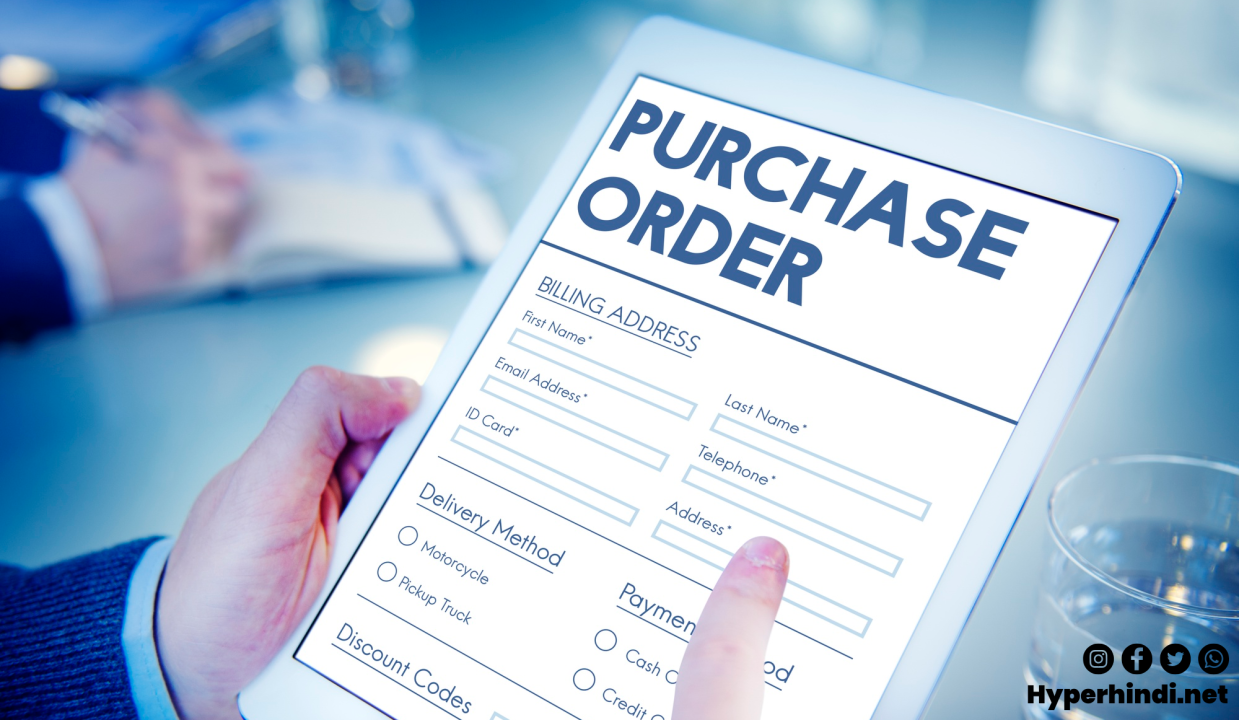
What is the PO | Meaning | Types | PO and Non PO Invoices
What is the PO | Meaning | Types | PO and Non PO Invoices
PO stands for Purchase Order. It is a commercial document issued by a buyer to a seller, indicating the types, quantities, and agreed prices for products or services the buyer wishes to purchase. The purchase order serves as a legally binding contract between the buyer and the seller once the seller accepts it. It outlines the terms and conditions of the purchase and serves as a record for both parties.
Types of Purchase Orders:
- Standard Purchase Order: This is the most common type of purchase order. It includes details such as the item or service being purchased, quantity, price, delivery date, and terms of payment. It is used for one-time purchases of goods or services.
- Blanket Purchase Order: A blanket purchase order is used when a company wants to establish a long-term relationship with a supplier for multiple deliveries over a specified period. Instead of issuing individual purchase orders for each delivery, a single blanket purchase order is used, and the deliveries are scheduled as needed.
- Contract Purchase Order: A contract purchase order is used when the buyer and seller enter into a formal contract that sets out the terms and conditions of the purchases over an extended period. It may cover multiple items or services and often includes negotiated pricing and volume discounts.
- Planned Purchase Order: A planned purchase order is used to inform the supplier about the buyer's intentions and requirements without creating a legal obligation. It is often used for long-term planning, giving the supplier advance notice to prepare for future orders.
- Framework Purchase Order: A framework purchase order is similar to a blanket purchase order, but it allows for more flexibility in terms of the quantity and timing of deliveries. It sets a framework of agreement but allows the specific details to be negotiated for each delivery.
- Service Purchase Order: Service purchase orders are used specifically for the procurement of services rather than physical goods. It outlines the scope of the services, payment terms, and other relevant details.
- Internal Purchase Order: An internal purchase order is used within a company between different departments or divisions to facilitate interdepartmental transactions and allocate costs accordingly.
Each type of purchase order serves a specific purpose and helps streamline the purchasing process, ensuring that goods and services are acquired efficiently and within the agreed-upon terms.
PO and Non PO Based Invoices
PO (Purchase Order) and Non-PO (Non-Purchase Order) invoices are two different types of invoices used in the procurement and payment processes of a business. Let's explore each type:
- PO (Purchase Order) Invoices:
- A PO invoice is an invoice that is associated with a purchase order. When a company wants to buy goods or services from a supplier, they typically create a purchase order detailing the items or services, quantities, agreed-upon prices, and other terms and conditions. Once the supplier acknowledges and accepts the purchase order, they proceed with fulfilling the order.
After the supplier delivers the goods or completes the services, they issue an invoice known as a PO invoice. This invoice references the specific purchase order number, indicating that the goods or services provided are in line with the agreed terms. The buyer then matches the PO invoice with the original purchase order and the receipt of the goods or services to ensure accuracy. Once everything matches, the buyer processes the payment for the invoice.
Using PO invoices helps ensure that purchases are made according to established agreements, reducing the risk of errors and discrepancies in the payment process. It also enables better tracking and control over the procurement process.
- Non-PO (Non-Purchase Order) Invoices:
- Non-PO invoices, as the name suggests, are invoices that are not associated with any purchase order. These invoices are used when a company procures goods or services without going through the traditional purchase order process. Non-PO invoices are often used for smaller, one-time purchases, services, or urgent requirements.
For example, in some cases, a company may need to purchase office supplies from a local vendor on short notice. Instead of going through the lengthy process of creating a purchase order, the company directly requests the goods from the vendor. The vendor then issues a non-PO invoice, which includes the details of the transaction (items, quantities, prices, etc.).
Non-PO invoices may also be used for recurring expenses, utility bills, and other services where the amount or timing of the expense cannot be predicted in advance.
While non-PO invoices offer more flexibility and speed in processing smaller transactions, they may be more challenging to track and control compared to PO invoices. Consequently, companies often implement specific guidelines and approval processes for handling non-PO invoices to ensure proper documentation and payment processing.
In summary, PO invoices are associated with purchase orders and are used for more structured and controlled procurement, while non-PO invoices are used for ad-hoc or one-time purchases and provide greater flexibility but may require additional oversight to manage effectively.